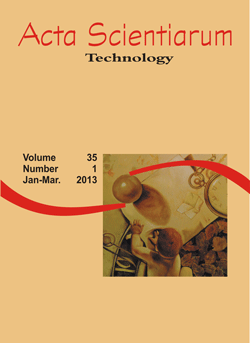<b>Preliminary qualitative and quantitative assessment of gases from biodigestion of solid wastes in the landfill of Londrina,Paraná State, Brazil</b> - doi: 10.4025/actascitechnol.v35i1.11453
DOI:
https://doi.org/10.4025/actascitechnol.v35i1.11453Keywords:
landfill, gases, measurementsAbstract
Trials conducted in controlled landfillsor dumps are still incipient in Brazil. This paper aimed to qualify and quantify the emission of biogas in the landfill of Londrina, Paraná State. Measurements were performed by three types of tests: static closed chamber for the characterization and quantification of gas leakage by the surface layer, inspection tubes for pressure quantification and qualification of the biogas produced below the surface layer and, finally, measurements in vertical drains to quantify and qualify the biogas. Results for the flow rates of methane gas in the vertical drains ranged from 0 to 190.2 N m 3 h-1, depending on the shape of the drain and to the age of solid waste deposition. The tests with static closed chamberhad results between 1.3 and 30.6 NL h-1 m2, influenced by changes in the age of solid waste deposition, different thicknesses of the surface layer, and excessive rainfall during the tests. With the data of methane gas flow obtained by thestatic closed chambertests and by the biogas drains, it was preliminary quantified the total emission of methane in the landfill of Londrina, Paraná State.
Â
Downloads
Downloads
Published
How to Cite
Issue
Section
License
DECLARATION OF ORIGINALITY AND COPYRIGHTS
I Declare that current article is original and has not been submitted for publication, in part or in whole, to any other national or international journal.
The copyrights belong exclusively to the authors. Published content is licensed under Creative Commons Attribution 4.0 (CC BY 4.0) guidelines, which allows sharing (copy and distribution of the material in any medium or format) and adaptation (remix, transform, and build upon the material) for any purpose, even commercially, under the terms of attribution.
Read this link for further information on how to use CC BY 4.0 properly.



















8.png)




